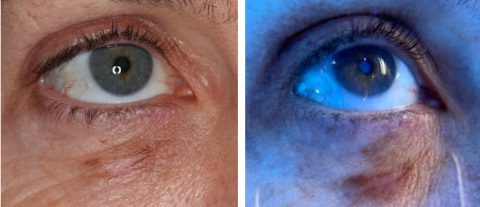Evaluating Lesions with Blue Light

Have you ever wondered how your medical provider can look at a lesion and know whether or not it’s something to be concerned about?
There are multiple aspects to evaluating pigmented lesions – the most important being physical exam. But there is a very helpful tool that providers have in their tool box: a Wood’s Lamp. It is a type of black light emitting a wavelength around 365nm – the blue edge of the visible light spectrum that includes UV light.
A Wood’s Lamp is a blue fluorescent light that is a very useful tool used frequently in dermatology for the evaluation several diagnoses, such as:
- Pigmented lesions
- Vitiligo
- Tinea Capitis (skin fungal infection)
- Lice
- Pityriasis versicolor
- Erythrasma
- Acne
- Sun damage
Under the Wood’s Lamp, normal skin will look slightly blue, whiter spots are thickened skin, yellow is oily skin, and purple is dehydrated skin. Pigmented lesions will become darker. This helps your clinician identify the extent of the lesion. This tool can be particularly helpful when planning for surgical excision as it allows your clinician to estimate how much tissue will need to be removed.
